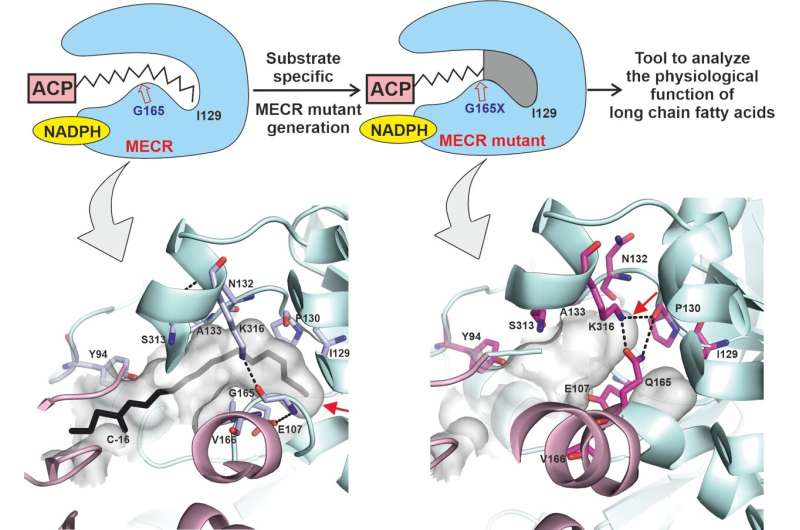This article has been reviewed according to Science X's editorial process and policies. Editors have highlighted the following attributes while ensuring the content's credibility:
fact-checked
peer-reviewed publication
proofread
Researchers investigate the role of long-chain fatty acids in cellular respiration

Cellular respiration is a complex and highly regulated process that allows cells to draw energy from nutrition. An international team of scientists in Finland, Germany and Poland have investigated the important role of long-chain fatty acids in guiding this process. The findings, published in Nature Communications, will shed light on the understanding of mitochondrial function that involve disruptions in cellular energy metabolism.
They are tiny and highly efficient energy factories operating inside our cells. Often referred to as "powerhouses," mitochondria extract most cellular energy from nutrition. Researchers from the University of Oulu, (Finland), the Heidelberg Institute for Theoretical Studies (HITS, Germany), and the University of Warsaw (Poland) have now succeeded in demonstrating how long-chain fatty acids regulate the amount of energy drawn in this process called cellular respiration. The discovery is ground-breaking as the importance of long-chain fatty acids produced by mitochondria in cellular respiration had not been previously known and the results open up a completely novel approach.
"This information helps us understand diseases that involve impaired mitochondrial function and cellular respiration much better than before," says M. Tanvir Rahman from the University of Oulu and lead author on the paper.
The study is part of a more extensive research project investigating the connection between cellular respiration and the cell's nutritional state. The scientists used a protein engineering method, in which the mutants of the so-called MECR enzyme involved in mitochondrial fatty acid synthesis were designed using computational molecular modeling, along with structure determination by crystallography, and other experiments to validate the predictions. "Our study is an example of a successful case of targeted protein modification," says researcher Kaija Autio from the University of Oulu.
The experiments in this interdisciplinary study were carried out by biochemists and crystallographers from the Faculty of Biochemistry and Molecular Medicine of the University of Oulu and Biocenter Oulu, while the molecular modeling was done by computational biophysicists from the Heidelberg Institute for Theoretical Studies (HITS) and the University of Warsaw. "This study really demonstrates the value of combining computational and experimental approaches to reveal complex biomolecular mechanisms," says Rebecca Wade from HITS.
More information: M. Tanvir Rahman et al, An engineered variant of MECR reductase reveals indispensability of long-chain acyl-ACPs for mitochondrial respiration, Nature Communications (2023). DOI: 10.1038/s41467-023-36358-7
Journal information: Nature Communications
Provided by Heidelberger Institut für Theoretische Studien gGmbH





















